What is an Output Device?
A computer hardware device which is used to supply the
information produced by the computer to the outside world in the desired format is
known as the output device.
In other words, an output device is the peripheral device of
the computer which receives processed data or information from the computer and
represents it in the user-understandable form is called an output device. The
output produced by the device may be an image, video, audio or hard copy,
etc. depending on the type of output device.
In modern computer systems, several different types of
output devices are used. The collection of output devices of the computer is
called the output unit.
Functions of Output Device
An output device of the computer performs the following three major functions:
- It accepts the processed data or information from the CPU of the computer system in binary form.
- It converts the information in binary form into a human-understandable format.
- It supplies the information to the outside world or to the user in the form of audio, video, image, printed data, etc.
Different Output Devices of Computer
The following are the most common output devices that are widely used to supply information from the computer the users:
- Monitor
- Printer
- Plotter
- Projector
- Speaker
Monitor
A computer monitor is one of the most important and widely used output devices of a computer system. It displays the soft copy of the information on the monitor screen which can be seen and read by the user.
The monitor is also known as VDU (Visual Display Unit). A monitor can display the information in
any format like text, image, video, audio, etc. A monitor forms the images and
patterns on the screen by arranging small dots in a rectangular pattern. These
small dots are known as pixels. The
quality, i.e. sharpness of an image on the screen is determined by the number
of small dots (or pixels), which means the sharpness of the image increases
with the increase in the number of pixels.
Depending on the type of viewing screen, the computer monitors are classified into the following two types:
- CRT (Cathode Ray Tube) Monitor
- Flat Panel Monitor
CRT Monitor
The CRT (Cathode Ray Tube) monitor is the type of computer monitor whose working is based on the working principle of a cathode ray tube. In a CRT monitor, the cathode ray tube is used to generate a beam of high-energy electrons. The part of CRT which emits the electrons is known as an electron gun. These high-energy electrons are guided by electrostatic fields and strike the surface of a fluorescent screen to generate the images on the screen.
In the CRT monitors, there are millions of phosphor dots
(pixels) of three primary colors namely red, green and blue present. These RGB
dots glow when the electron beam struck on them to create an image on the
screen.
The major parts of a typical CRT monitor are CRT,
fluorescent screen, glass envelope, and deflection plates. The main disadvantages
of CRT monitors are high power consumption, large physical size and low
picture quality. Therefore, CRT monitors are rarely used these days.
Flat Panel Monitor
Flat panel monitors are those computer monitors that have less weight, volume and power as compared to the CRT monitor. The flat panel monitor has a thin display screen so these can also be hung on the wall. Depending on the technology used, the flat panel monitors can be further classified into two types:
- Non-Emissive Display Monitors - In these monitors, the optical effect such as reflection, refraction, and scattering are used to convert the light from some source like an LED bulb into graphics patterns. The most common examples of non-emissive display monitors are LCD (Liquid Crystal Display) monitors.
- Emissive Display Monitors - Emissive display monitors are those in which electrical energy is directly converted into light and then graphics patterns. The most common example of an emissive display monitor is an LED (Light Emitting Diode) monitor.
The advantages of flat panel monitors over CRT monitors
are that these monitors are smaller in size, consume less power, produce high-quality graphics, etc. Therefore, these types of monitors are very popular
these days.
Printer
A printer is an output device used with computers or other computing devices to produce processed data and information on paper. The printers produce output in a permanent readable format. Hence, the output of the printer is sometimes called a hard copy. The quality of output produced by the printer is measured in DPI (Dots Per Inch).
Types of Printers
The classification of printers is given as follows:
- Impact Printers
- Character Printer
- Dot Matrix Printer (DMP)
- Daisy Wheel Printer
- Line Printer
- Drum Printer
- Chain Printer
- Non-Impact Printers
- LASER Printer
- Inkjet Printer
- Thermal Printer
Impact Printers
Impact printers
are the types of printers in which patterns (text, symbols, etc.) are printed
by striking them on a ribbon, which is then pressed on a paper placed behind
the ribbon. Since these printers consist of moving parts, hence their
operation is very noisy.
The following are some important characteristics of impact printers:
- Impact printers require physical contact with the paper to print the information.
- The printing cost for the impact printers is very low.
- Due to low cost, these are suitable for bulk printing.
Character Printers
The type of impact printer which prints only one character
at a time is called a character printer.
Character printers are of two types namely, dot matrix printers and daisy
wheel printers.
Line Printers
The type of impact printer which prints one line at a time
is known as a line printer. The line
printers are also of two types namely, drum
printers and chain printers.
Dot Matrix Printer
The dot matrix
printer or DMP is a type of
character printer which prints the characters in the form of dotted patterns.
The dot matrix printers are widely used because their operation is easy and
economical. The printing head of dot matrix printers is made of tiny
electromagnetically active pins which print the characters by striking on an
ink-coated ribbon. However, the major disadvantages of dot matrix printers are slow speed, noisy operation and poor print quality.
Daisy Wheel Printer
The daisy wheel printer
is also a type of character printer whose printing head resembles a daisy
flower. Its head consists of pins of corresponding characters and is attached
to a wheel in the form of the petals of a daisy flower.
The daisy wheel printers are more reliable than dot matrix printers
because these produce prints of relatively better quality. Another major
advantage of daisy wheel printers is that their fonts of character sets can be
easily altered. Although, these are comparatively slower and more expensive than
the dot matrix printers. The operation of these printers is also very noisy.
Drum Printer
The drum printer
is a type of line printer that can print one line of information at a time. It
is named so because its printing head is in the form of a drum. Since the drum
printer can print one line at a time hence their speed is very high. Although,
these are very expensive and also the change in the fonts of character sets is
not possible. The drum printers can print around 200 to 2000 lines in one
minute.
Chain Printer
The chain printer
is again a type of line printer. Its printing head is in the form of a chain,
i.e. it has a chain of character sets. In the case of chain printers, the fonts of
character sets can be changed easily. Consequently, the printing of different
languages is possible with the same printer. Although, the operation of the chain
printer is also noisy.
Non-Impact Printers
As the name implies, the types of printers in which
characters and graphics are printed without using the ribbon and hammer
assembly are known as impact printers.
All the impact printers are the types of page printers because they print a
complete at a time. That is why these are sometimes also called page printers.
The speed of the non-impact printer is more than that of the
impact printer as this print one page at a time. The other advantages of a non-impact printer are less noisy operation, high-quality prints, and support for a
large number of fonts and character sizes.
Laser Printer
Laser printers
are types of non-impact printers. These use laser technology to produce the graphics on paper. A LASER printer
consists of a drum coated with a photosensitive material which is charged, and then
the laser light is used to make the graphic pattern on the drum. This drum
then rotates through the drum tonner, where the tonner is the dry ink
and the toner is then fused to the paper due to heat in the pattern of graphics.
The laser printers produce monochromatic (usually back-colored) prints only.
The speed of laser printers is measured in ppm
(pages per minute). The laser printers produce good-quality prints and
their operation is noise free. However, the initial cost of a laser printer is
high. These are suitable for commercial and large-scale printing due to low
operating costs.
Inkjet Printer
The inkjet printer
prints the graphics patterns on the paper by spraying tiny drops of wet ink. These
printers can produce back-and-white as well as colored prints by using a
mixture of different inks.
Inkjet printers are less costly but their operating cost
is comparatively higher than laser printers. Therefore, these printers are more
suitable for small-scale printing such as for student and personal purposes.
Thermal Printer
A thermal printer
is a special type of printer which uses heat elements to print graphics on special paper. The paper used in thermal printers is heat-sensitive paper,
commonly called thermal paper. The printing cost of thermal printers is very
high, as a result, these are used for printing professional art and designs.
Thermal printers are also used in ATM machines or POS terminals for printing receipts.
Plotter
The plotter is a special type of printer which is mainly used to print high-quality graphics of engineering such as vector graphics, building plans, circuit diagrams, etc. These printers use ink pens or inkjet to print the graphic patterns. The two common types of plotters are namely drum plotters and flatbed plotters.
Projector
Projector also called a multimedia projector, is an output device which projects or displays the outputs of a computer on a large screen. It is mainly used to display the output to a large audience such as in meetings and conferences.
Speaker
A speaker is also a type of output device used to supply the output information produced by the computer to the outside world in the form of audio signals. The speaker consists of audio amplifiers that vibrate to produce audio signals as output.
Conclusion
Thus, in this article, we discussed all the common output devices of computers along with their definition, working, advantages and applications. However, at present many more output devices are used with computers such as headphones, touchscreens, etc. The important thing to remember always is that output devices supply the information generated by the computer to the outside world in the desired format.

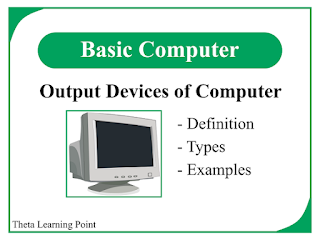
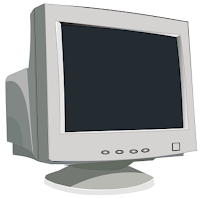
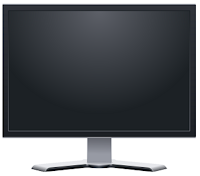
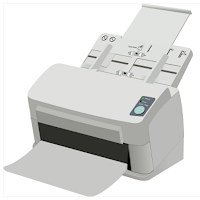
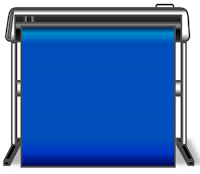
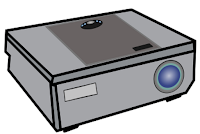
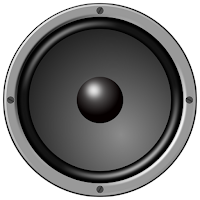
.png)





0 Comments